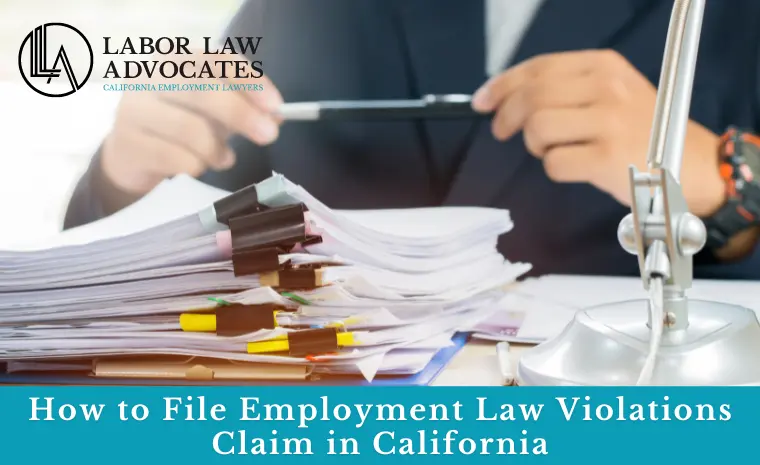Are you working in California and are experiencing workplace challenges? Understanding your rights under employment law can help you uphold your rights. Whether it’s issues related to minimum wage, workplace safety, discriminatory practices based on national origin, or other violations, knowing how to address this is essential.
Navigating the complexities of employment law can be daunting, but with the right knowledge, you can take effective action. This blog aims to guide employees through filing a claim for employment law violations in California. Continue reading to learn more about the specific steps involved in filing your claim.
Step 1: Identify the Violation
In California, recognizing employment law violations is the first critical step in safeguarding your rights as an employee. Common violations include:
- Labor Law Violations: These often involve breaches of hour laws, such as unpaid overtime or failure to provide legally mandated breaks.
- Workplace Discrimination: This can occur against groups like people with disabilities, or based on age, race, or national origin.
- Sexual Harassment: Unwanted advances, inappropriate comments, or any sexual behavior that creates a hostile work environment fall under this category.
To determine if your rights have been violated, review the specifics of California labor laws related to your concern. If the treatment you received deviates from what is legally acceptable—such as not receiving minimum wage, experiencing differential treatment, or facing harassment—it may constitute a violation.
Step 2: Gather Evidence
Compiling robust evidence is essential as a California employee preparing to address a violation within your employer-employee relationship. Key types of evidence include pay stubs, which can prove wage discrepancies; emails and written communications that document any inappropriate or discriminatory behavior; and witness statements that corroborate your employment claims.
To collect and organize this evidence effectively, maintain a chronological file and ensure all documents are clearly labeled and dated. This meticulous organization will serve as a strong foundation for your employment lawsuit, demonstrating the validity of your claims in a structured and persuasive manner.
Step 3: Review Company Policies and Procedures
Before proceeding with filing an external claim for employment issues, it’s crucial for you to thoroughly review your employment contract and your company’s policies on disciplinary action. These documents often contain specific procedures for raising concerns internally, which typically is a required first step before escalating matters.
Understanding these guidelines ensures you adhere to necessary protocols, which can be pivotal in resolving disputes internally or strengthening your case if external legal action becomes necessary. Following established procedures shows a methodical and compliant approach to addressing employment grievances, potentially benefiting any legal actions taken later.

Step 4: File a Complaint with the Appropriate Agency
For labor law violations in California, filing a formal complaint with the California Civil Rights Department (CRD) or the Equal Employment Opportunity Commission (EEOC) is essential. With the CRD, employment-related complaints must be submitted within three years from the date of the alleged violation, while other types of cases require filing within one year.
To file with the EEOC, you can submit your complaint via mail or in person, ensuring accessibility regardless of your location. Understanding and adhering to these reporting requirements is crucial for the timely and effective processing of your claim by the appropriate government agency.
Step 5: Seek Legal Advice
Consulting with an employment attorney offers several benefits:
- Expert guidance on civil rights laws and legal action specifics.
- Strategic advice tailored to the nuances of your employment lawsuit.
- Assistance with complex legal documentation and procedural requirements.
An attorney can help strengthen your claim by ensuring all evidence is correctly presented and that legal deadlines are met. They can also navigate you through the intricate legal process, offering clarity and support at each step.
Furthermore, employment lawyers often facilitate mediation or arbitration, which can be effective alternatives for dispute resolution. These methods can provide a quicker, less adversarial way to resolve disputes compared to traditional court proceedings.
Step 6: File a Lawsuit if Necessary
In cases where mediation or internal grievance processes fail, and legal issues remain unresolved—particularly in severe cases like sexual harassment or discrimination based on national origin—an employee may need to consider filing a lawsuit. This step is crucial when an employer’s actions blatantly violate employment laws, and no satisfactory resolution has been reached.
To initiate a lawsuit, first, consult with employment attorneys who specialize in employment law to evaluate the strength of your case. These legal professionals will guide you through drafting and filing a complaint in the appropriate court.
The process typically involves detailing the violations, the harm suffered, and the legal remedy sought, setting the stage for court proceedings.
Know CA’s Employment Law, Protect Your Rights Today
Navigating the process of filing employment claims in California requires understanding your rights as an eligible employee and being aware of proper employment practices. From identifying violations to consulting with legal experts, each step plays a crucial role in advocating for justice in your workplace.
By following these guidelines, you can effectively pursue a claim and seek the remedies you deserve. If you need assistance or have questions about your specific situation, don’t hesitate to contact us—our team of experienced employment attorneys is here to help.




